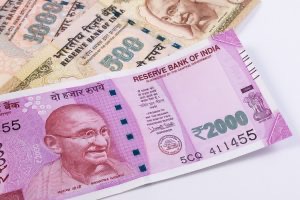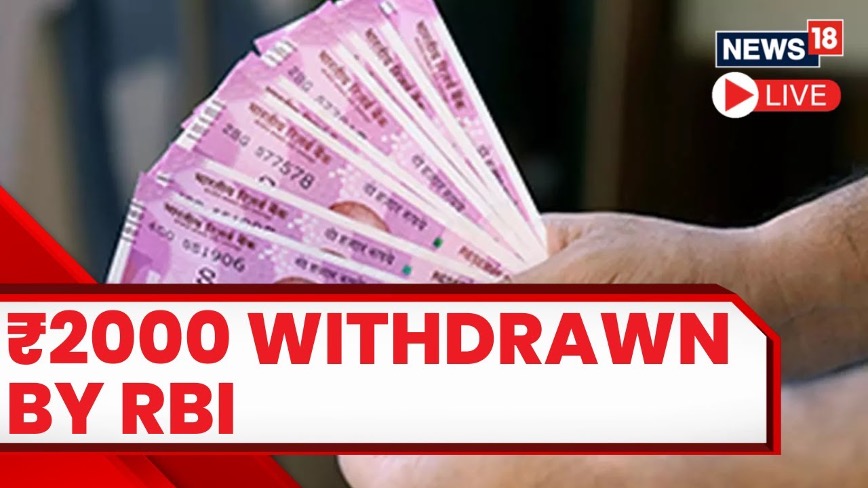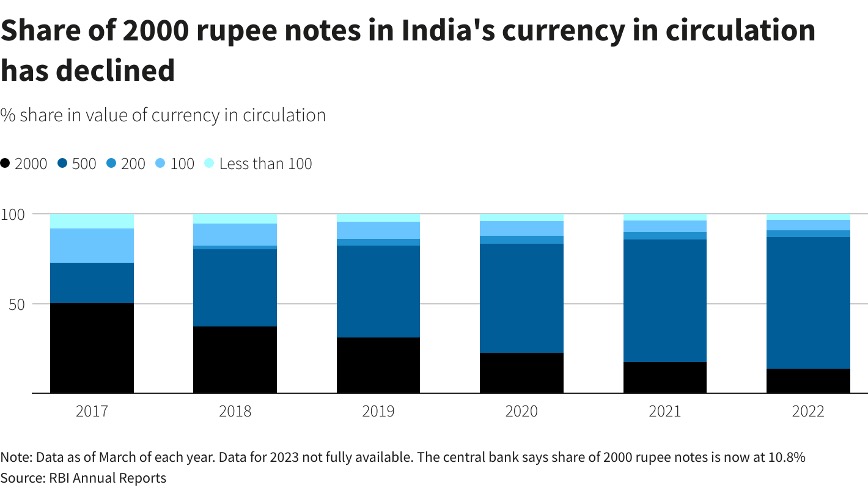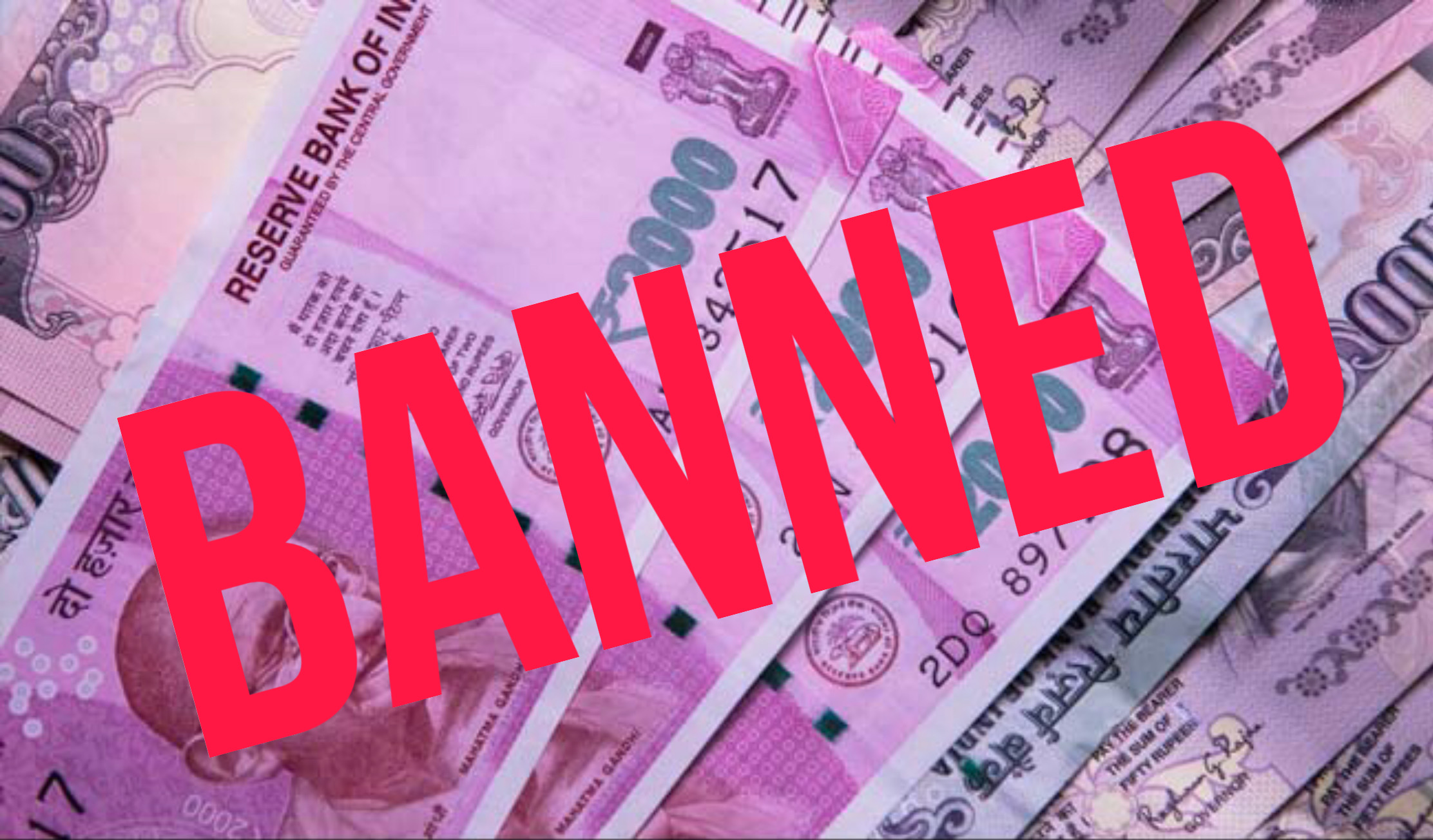The 2,000-rupee note, which was first issued in 2016 when the 500- and 1,000-rupee notes were demonetized, has since been taken off the market.
The Reserve Bank of India stated on May 19 that it was discontinuing the use of the highest denomination note in the nation—the 2,000 rupee note, which is currently worth $24.27.
The Reserve Bank of India (RBI) has decided to stop issuing banknotes with a value of Rs 2000. The RBI stated on 19 May, Friday that the current notes will nonetheless remain valid forms of payment.
The public has been asked by the central bank to deposit the new Rs 2000 banknotes—introduced after the removal of Rs 500 and Rs 1000 notes during the demonetisation process six years ago—into their bank accounts and/or swap them for notes of other denominations at any bank branch.

Reason for the withdrawal of 2000 -Rupee Note
The Rs 2000 note was released in November 2016 in accordance with Section 24(1) of The RBI Act, 1934, principally with the aim of swiftly addressing the economy’s need for money following the withdrawal of the legal tender status of the Rs 500 and Rs 1000 notes. The printing of Rs 2000 notes was discontinued in 2018–19 once that goal was achieved and sufficient supplies of notes in other denominations were on hand.
Prior to March 2017, the RBI released the majority of the Rs 2000 notes; these notes have now reached the end of their anticipated lifespan of 4-5 years. There is an adequate supply of banknotes in other denominations to meet cash needs, and this denomination is no longer frequently used for transactions.

The Reserve Bank of India said that it had decided to remove the Rs 2000 denomination banknotes from circulation in light of the foregoing and in accordance with its “Clean Note Policy.”
Rs 2000 banknotes still considered as Legal Tender
According to the RBI, the Rs 2000 banknote would continue to be accepted as legal money. The general public is still permitted to transact with and accept payments in Rs 2000 banknotes. The RBI stated that they were “encouraged” to deposit and/or exchange these banknotes by September 30, 2023.
Implications
Despite the 2,000-rupee note’s phased departure, thousands of people lined up outside banks to swap the notes after the RBI announcement caused panic. The RBI move undoubtedly brought back memories of the demonetization of money in 2016.
Few Indians will be able to forget the evening of November 8, 2016, when Modi made the decision to remove all currency notes with denominations of 500 and 1,000 rupees from circulation in a speech that was broadcasted on television. He gave a spectacular explanation of the causes of the unexpected change.
“The threat of terrorism is terrifying. It has resulted in a great number of deaths,” he claimed. However, have you ever considered where these terrorists receive their money from?
“Enemies from the other side of the border [Pakistan] operate using counterfeit money. This has been happening for a long time. Those using counterfeit 500 000 rupee notes have frequently been caught, and numerous such notes have been seized,” Modi stated.
According to the Modi government, another goal of the demonetization decision was to remove “black money,” or unaccounted funds that are stored as large-denomination notes.
Economic Growth Impact
In circulation 2000-rupee notes are worth $44.27 billion, or Rs 3.62 lakh crore. This represents roughly 10.8% of the currency in use.

Since, lesser denomination notes are easily accessible in sufficient numbers, withdrawing the 2000-rupee notes is not anticipated to result in a severe disruption. She also emphasised the rapid development of digital commerce and transactions over the previous 6-7 years, arguing that these alternate payment options can lessen any inconvenience brought on by the withdrawal of bigger value notes.
The withdrawal of the 2000-rupee notes may cause short-term difficulties for small enterprises and industries that depend on cash, such as agriculture and construction.
As previously mentioned, discretionary expenditure may increase, especially in sectors like gold purchases, if people holding the 2000-rupee notes choose to use them for purchases, rather than depositing them in bank accounts.
Affecting Banks
Bank deposits are anticipated to rise, as a result of the government’s order to deposit or exchange 2000-rupee notes for lower denominations by September 30. This deposit growth is taking place at a time when bank loan growth is outpacing deposit growth.
Withdrawing 2000-rupee notes will result in more deposits, which will relieve the pressure on deposit rate increases.
It was said that after all the 2000-rupee notes were deposited back into the banking system, cash circulation would diminish. It is anticipated that this decrease in cash flow will increase liquidity inside the banking sector.
Implications for Bond Markets
The banking system’s increased liquidity and the influx of deposits may cause short-term interest rates to decline. The fact that these funds are invested in short-term government securities may cause the market’s interest rates to decline.
The most recent action, in response to the 2016 demonetization is anticipated to increase bank deposits, dramatically- at least until September, as those who have 2,000 rupee notes with them are likely to deposit them largely in banks. A portion of the deposits in 2,000 rupee notes may be converted into smaller currencies, but another portion is anticipated to stay in the banking system for a longer period of time, boosting the amount of liquidity entering the system.
This additional liquidity may have an impact on lending and investment policies. Additionally, it could lead to more expensive purchases like jewellery, real estate, or land.
Experts are warning that the impact, whether favourable or negative, would be minor and transient. This is due to the fact that the 2,000-rupee notes had already begun to withdraw from circulation when the printing of them was discontinued in 2018.
The 2,000-rupee note was about to disappear. Without 2,000-rupee notes, people had become accustomed to life. It won’t be overlooked.
Written by Neha Gandhi
Edited by Kushi Mayur




